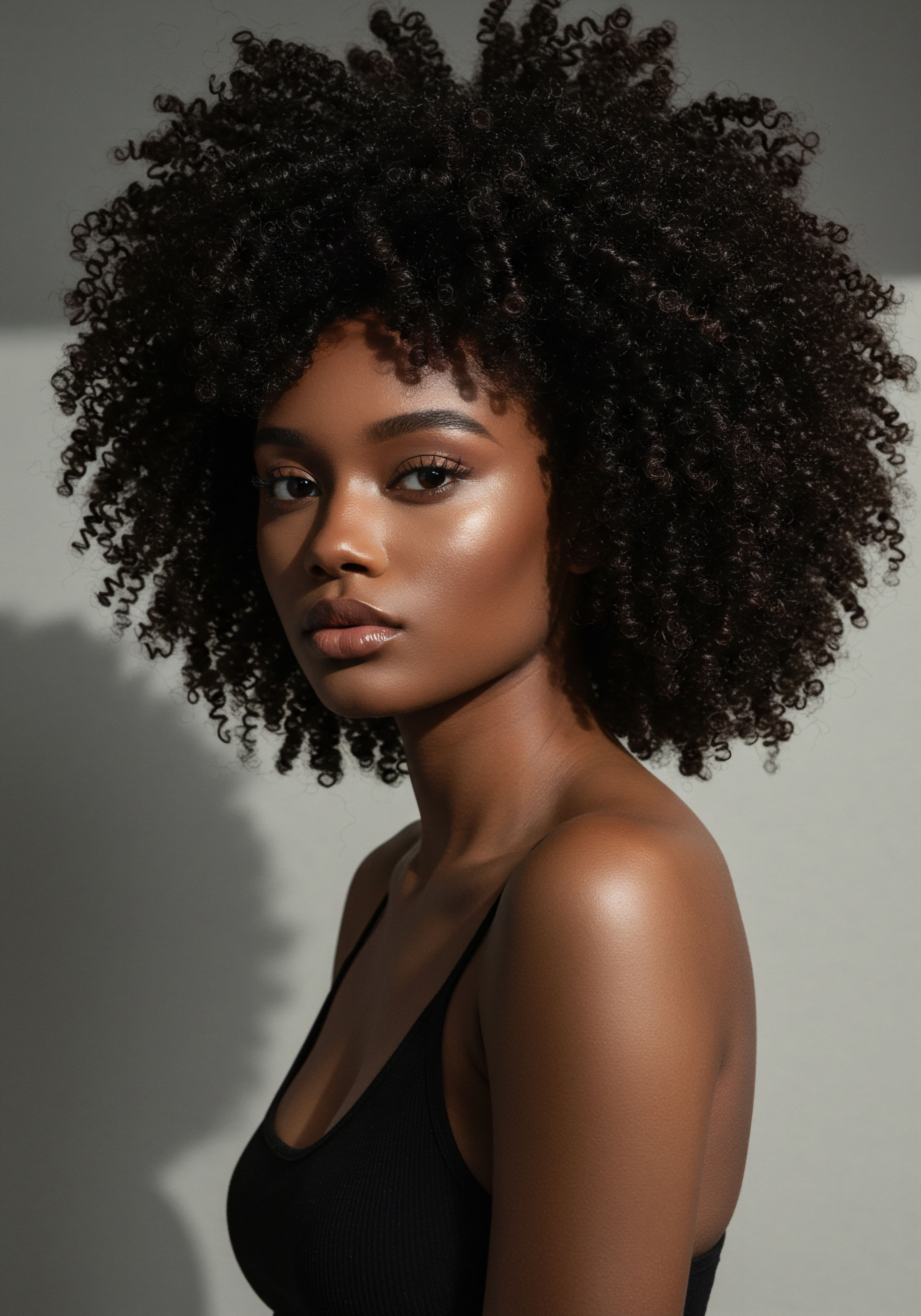
Roots
The very air we breathe, a seemingly invisible current surrounding us, holds a quiet conversation with our textured strands. This atmospheric dialogue, often overlooked in our daily routines, whispers profound truths about curl definition. Our hair, a living fiber, responds with subtle shifts and sometimes dramatic declarations to the composition of the air it encounters. To truly grasp the interplay, we must first descend to the foundational elements, understanding the inherent architecture of textured hair and its delicate relationship with its environment.
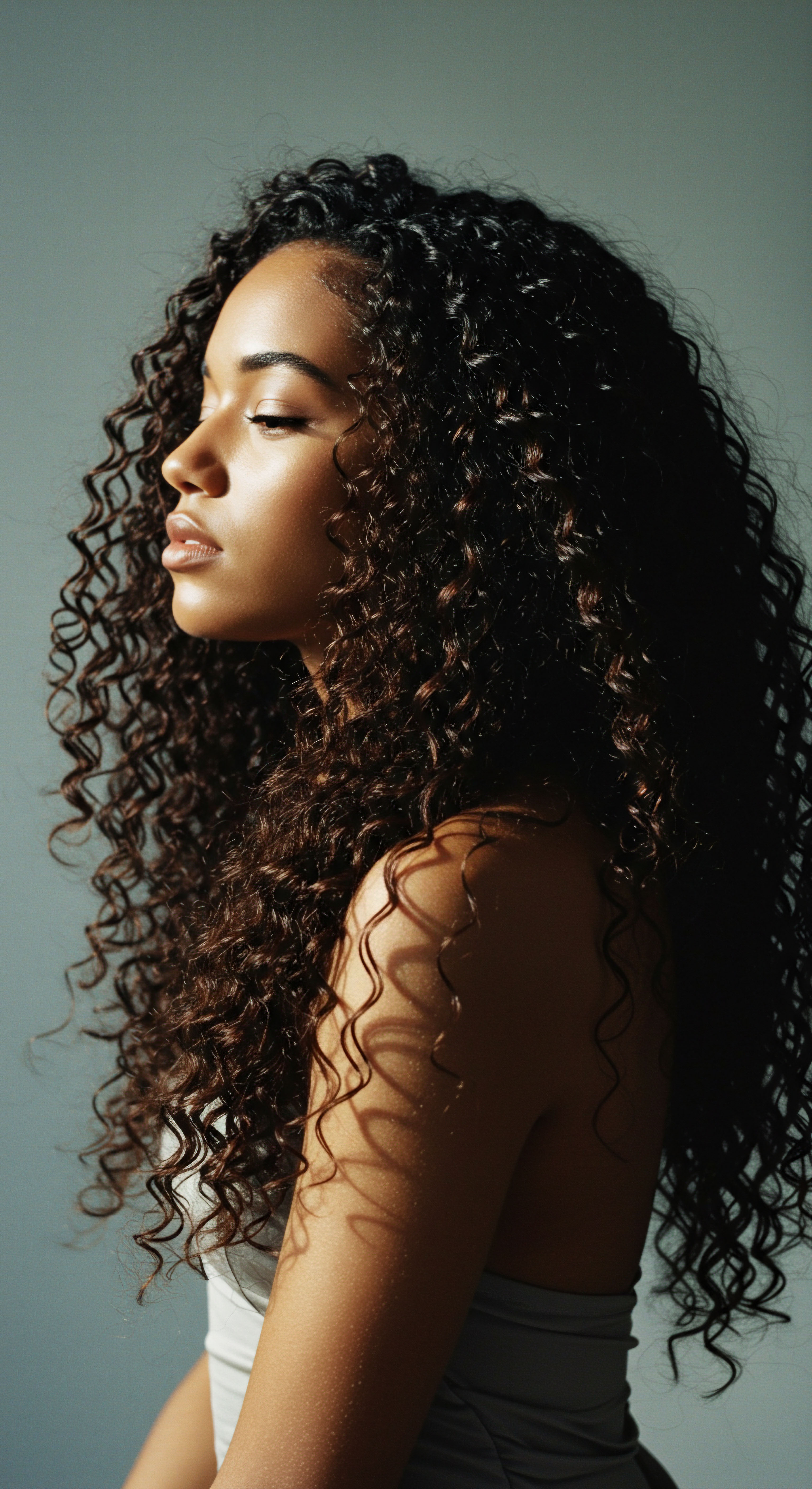
The Hair’s Outer Shield
The outermost layer of each hair strand, the Cuticle, functions as a protective armor, composed of overlapping scales much like shingles on a roof. For textured hair, these scales naturally tend to be more lifted or uneven compared to straighter hair types, creating inherent points of vulnerability. When the air carries elements beyond simple humidity, these microscopic scales can become agitated, leading to a cascade of effects.
Consider airborne particulates, for instance, which are not merely dust but a complex mixture of microscopic solids and liquid droplets. These particles, ranging from soot and sulfates to nitrates and metals, settle upon the hair’s surface.
The continuous exposure to these airborne agents can disrupt the cuticle’s smooth alignment. A cuticle that is lifted or damaged loses its ability to effectively seal in moisture, which is the very lifeblood of a well-defined curl. When the hair struggles to retain its internal hydration, the natural coil pattern begins to loosen, losing its spring and vibrancy. This physical interaction at the hair’s surface is the first, often unseen, chapter in the story of air quality and curl expression.

The Inner Core’s Resilience
Beneath the cuticle lies the Cortex, the heart of the hair strand, responsible for its strength, elasticity, and ultimately, its unique curl pattern. This region is a dense matrix of keratin proteins, held together by various bonds, including the critical disulfide bonds that dictate the hair’s inherent shape. Environmental stressors, particularly those stemming from poor air quality, possess the capacity to compromise this internal structure.
Chemical pollutants, such as volatile organic compounds (VOCs) and certain industrial gases, can penetrate the cuticle and begin to degrade the protein bonds within the cortex. This internal assault weakens the hair from within, diminishing its natural resilience and its capacity to hold a defined coil. A compromised cortex struggles to maintain the structural integrity necessary for curls to form and persist with clarity. The vitality of the curl, therefore, is inextricably linked to the unseen battles waged within the hair’s very core against atmospheric adversaries.
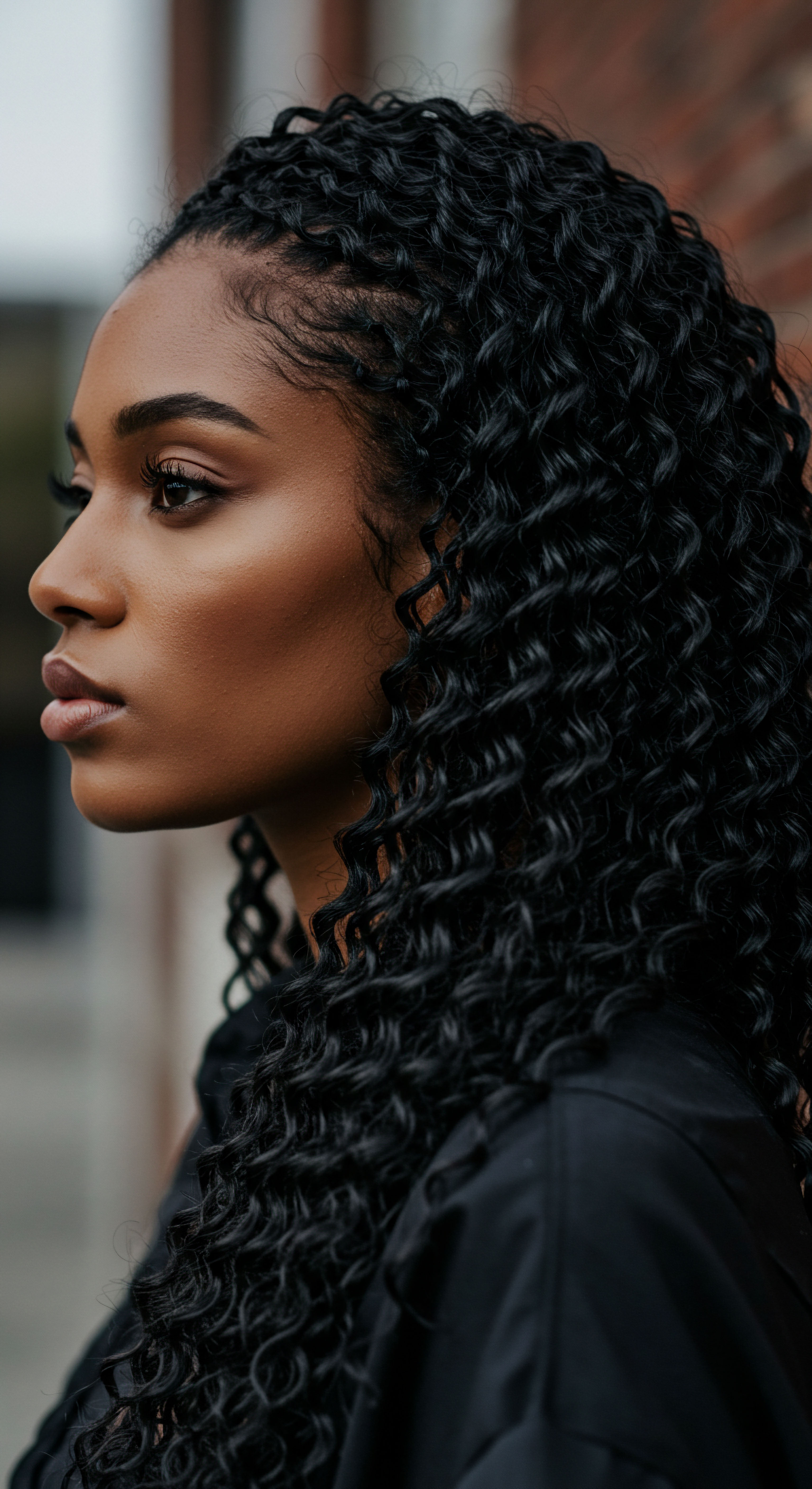
Moisture’s Dance in the Atmosphere
Perhaps the most intuitive connection between air quality and curl definition lies in the atmospheric moisture content, commonly known as Humidity. Textured hair, by its very nature, craves moisture. Its helical structure presents a greater surface area than straight hair, allowing it to absorb and release water more readily. This characteristic makes it exquisitely sensitive to fluctuations in ambient humidity.
The subtle interplay of atmospheric moisture and hair’s inherent structure dictates the very essence of curl definition.
In high humidity, water molecules from the air rush into the hair shaft, seeking equilibrium. While some moisture is beneficial, an excessive influx can cause the keratin proteins to swell unevenly, leading to a loss of definition and the often-lamented appearance of frizz. The hair, in its attempt to accommodate this sudden hydration, expands, disrupting the precise alignment that forms a defined curl.
Conversely, in very low humidity, the hair loses moisture to the drier air, becoming brittle, stiff, and equally prone to losing its coil. The delicate balance of moisture within the hair, constantly seeking equilibrium with its surroundings, is a dynamic dance, and the atmospheric humidity acts as the lead choreographer.
Understanding the hair’s intrinsic properties—its cuticle, cortex, and inherent moisture needs—lays the groundwork for comprehending how external environmental factors, particularly those related to air quality, sculpt and reshape the very definition of our curls. The journey from invisible atmospheric elements to visible curl expression begins at this fundamental, cellular level.
| Atmospheric Element Humidity (High) |
| Direct Hair Impact Water absorption, uneven swelling of keratin. |
| Effect on Curl Definition Increased frizz, loss of coil, expanded volume. |
| Atmospheric Element Humidity (Low) |
| Direct Hair Impact Moisture loss, dehydration. |
| Effect on Curl Definition Dryness, brittleness, diminished spring. |
| Atmospheric Element Particulate Matter (PM2.5, PM10) |
| Direct Hair Impact Surface deposition, cuticle abrasion. |
| Effect on Curl Definition Dullness, rough texture, impaired moisture seal. |
| Atmospheric Element Chemical Pollutants (VOCs, Ozone) |
| Direct Hair Impact Penetration to cortex, protein degradation. |
| Effect on Curl Definition Weakened elasticity, structural compromise, breakage. |
| Atmospheric Element Understanding these fundamental interactions provides a clearer picture of environmental stressors on textured hair. |
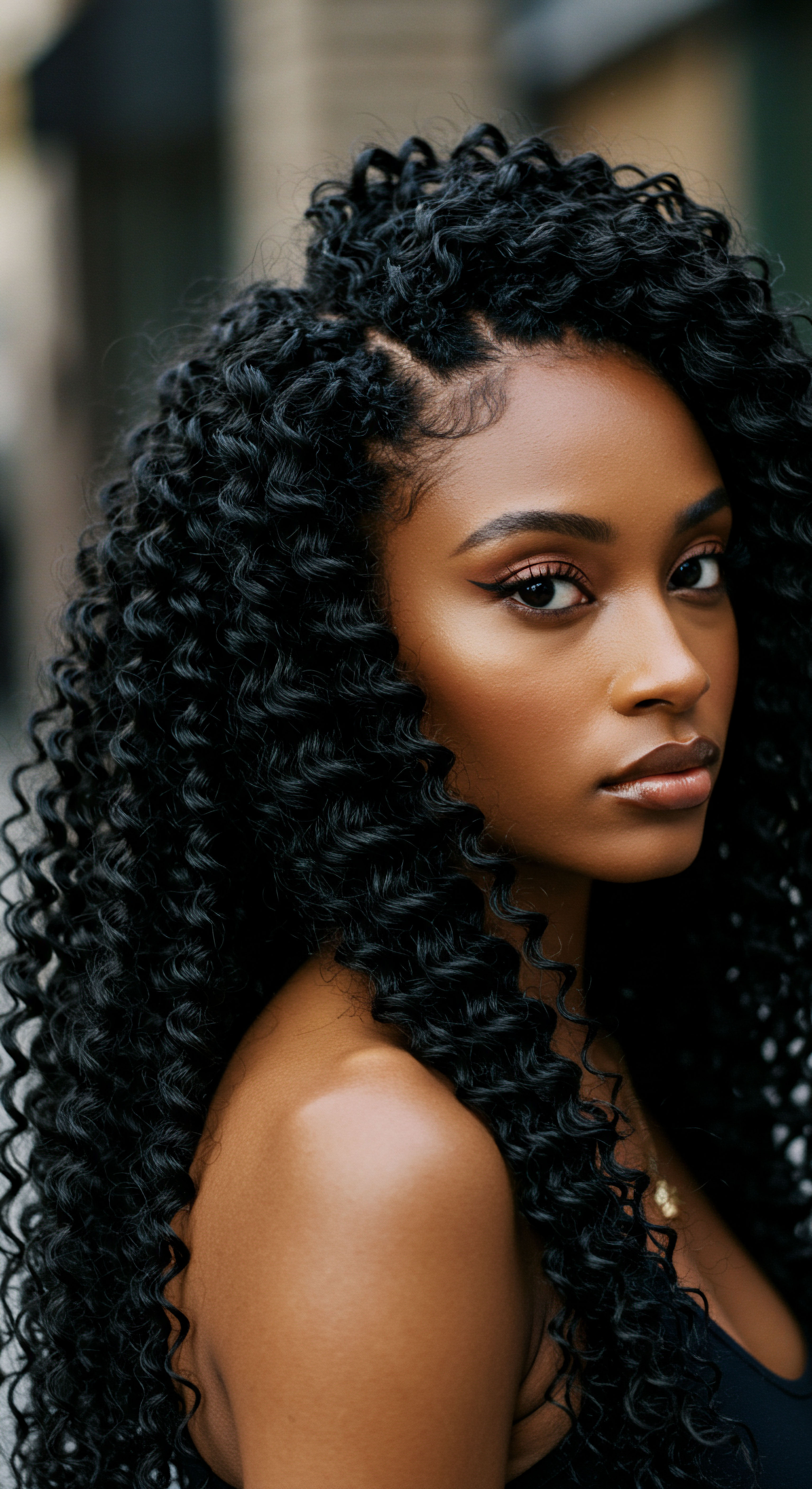
Ritual
Having journeyed through the foundational understanding of how the air touches our hair, we now arrive at the realm of daily and weekly practices. These are the conscious choices, the gentle movements, and the deliberate applications that serve as our response to the environment. Our rituals are not merely habits; they are acts of wisdom, born from an understanding of our hair’s needs in the face of atmospheric shifts. This section seeks to illuminate how intentional care can mitigate the effects of varying air quality, allowing our curls to express their fullest, most defined selves.

Cleansing with Purpose
The act of cleansing transcends mere removal of dirt; it is a critical step in addressing the invisible residues deposited by the air. When air quality is compromised by pollutants, these microscopic invaders settle on the hair and scalp, forming a film that can weigh down curls, obscure their natural definition, and even irritate the scalp.
Choosing the right cleansing agent becomes paramount. A gentle, sulfate-free cleanser can effectively lift away environmental debris without stripping the hair of its essential moisture. Over-cleansing, particularly with harsh formulations, can exacerbate the damage caused by pollutants, leaving the cuticle even more vulnerable. The frequency of cleansing also merits consideration; in environments with high pollution, a more regular, yet still gentle, cleansing schedule might be necessary to prevent accumulation that dulls curl vibrancy.
- Gentle Cleansers help preserve the hair’s natural moisture barrier against environmental stressors.
- Scalp Care is integral, as a healthy scalp fosters resilient hair that can better withstand external impacts.
- Rinsing Thoroughly ensures no lingering residue from products or pollutants remains to weigh down coils.
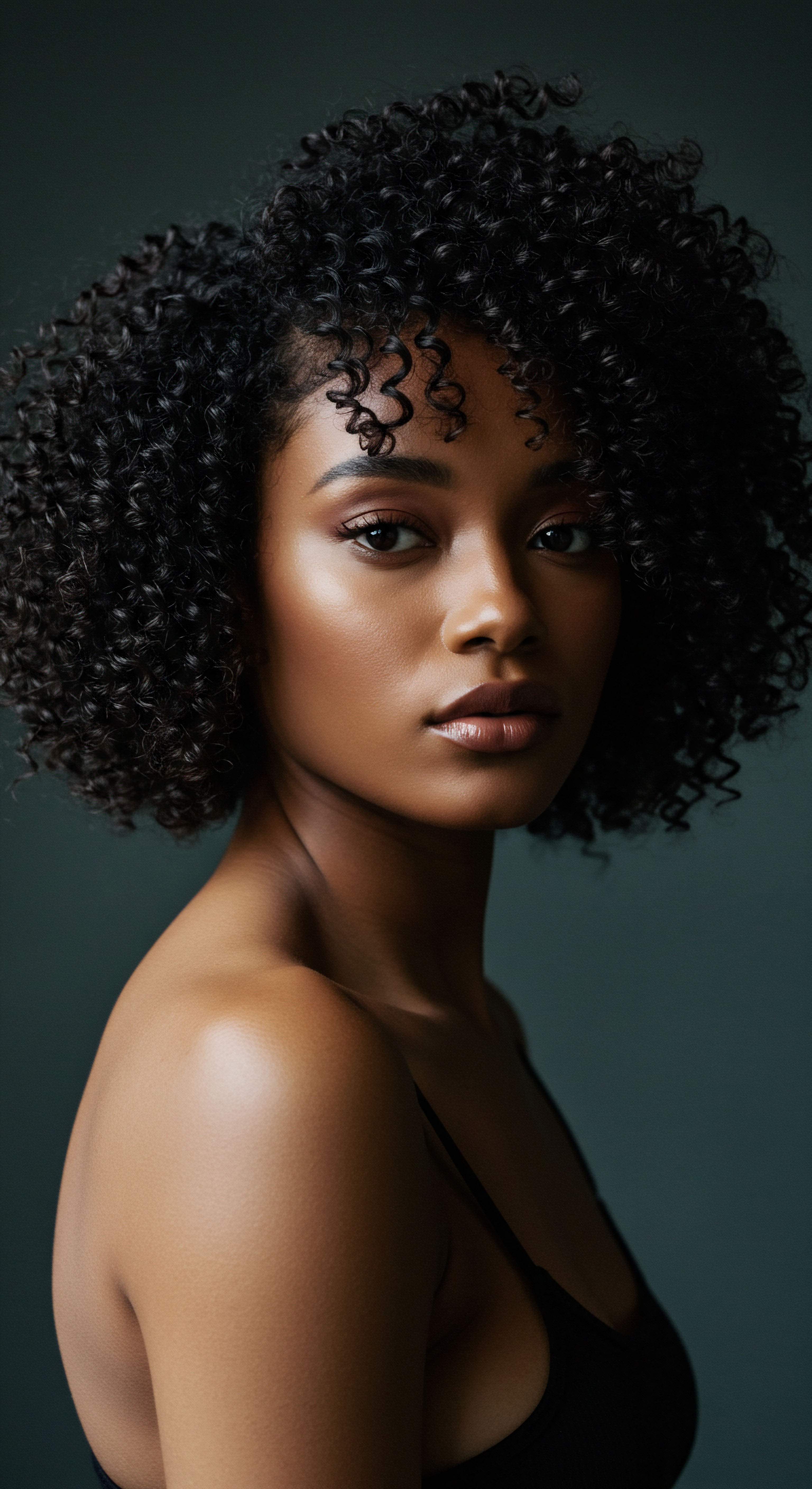
Conditioning for Resilience
After cleansing, conditioning becomes a profound act of replenishment and fortification. Conditioners work to smooth the cuticle, restoring its protective integrity and sealing in the moisture that is so vital for curl definition. This step is especially significant when considering the drying or damaging effects of polluted air.
Deep conditioning treatments, employed regularly, offer a more intensive dose of hydration and protein, helping to repair and strengthen the hair from within. Ingredients such as humectants (glycerin, hyaluronic acid) can draw moisture from the air into the hair in balanced environments, while emollients (shea butter, argan oil) create a protective barrier against moisture loss in dry air or the ingress of pollutants. The consistent application of these fortifying agents builds the hair’s resilience, allowing it to bounce back more readily from environmental challenges and maintain its inherent curl pattern.

Styling as a Shield
Our styling choices extend beyond aesthetics; they can serve as a protective shield against the elements. Products designed to define curls often contain polymers that form a flexible cast around the hair strand, offering a physical barrier against humidity fluctuations and particulate deposition. Gels, mousses, and curl creams, when applied thoughtfully, can help to lock in the hair’s desired shape, resisting the tendency of curls to expand or collapse in response to atmospheric changes.
Intentional product application creates a supportive scaffolding for curls, safeguarding their definition from atmospheric whims.
Beyond products, certain styling techniques can also minimize exposure. Protective styles, such as braids, twists, or buns, tuck away the delicate ends of the hair, which are most susceptible to environmental damage. While these styles might temporarily alter the visible curl pattern, they offer a reprieve from direct atmospheric assault, preserving the hair’s overall health and allowing for better definition when the hair is eventually released.
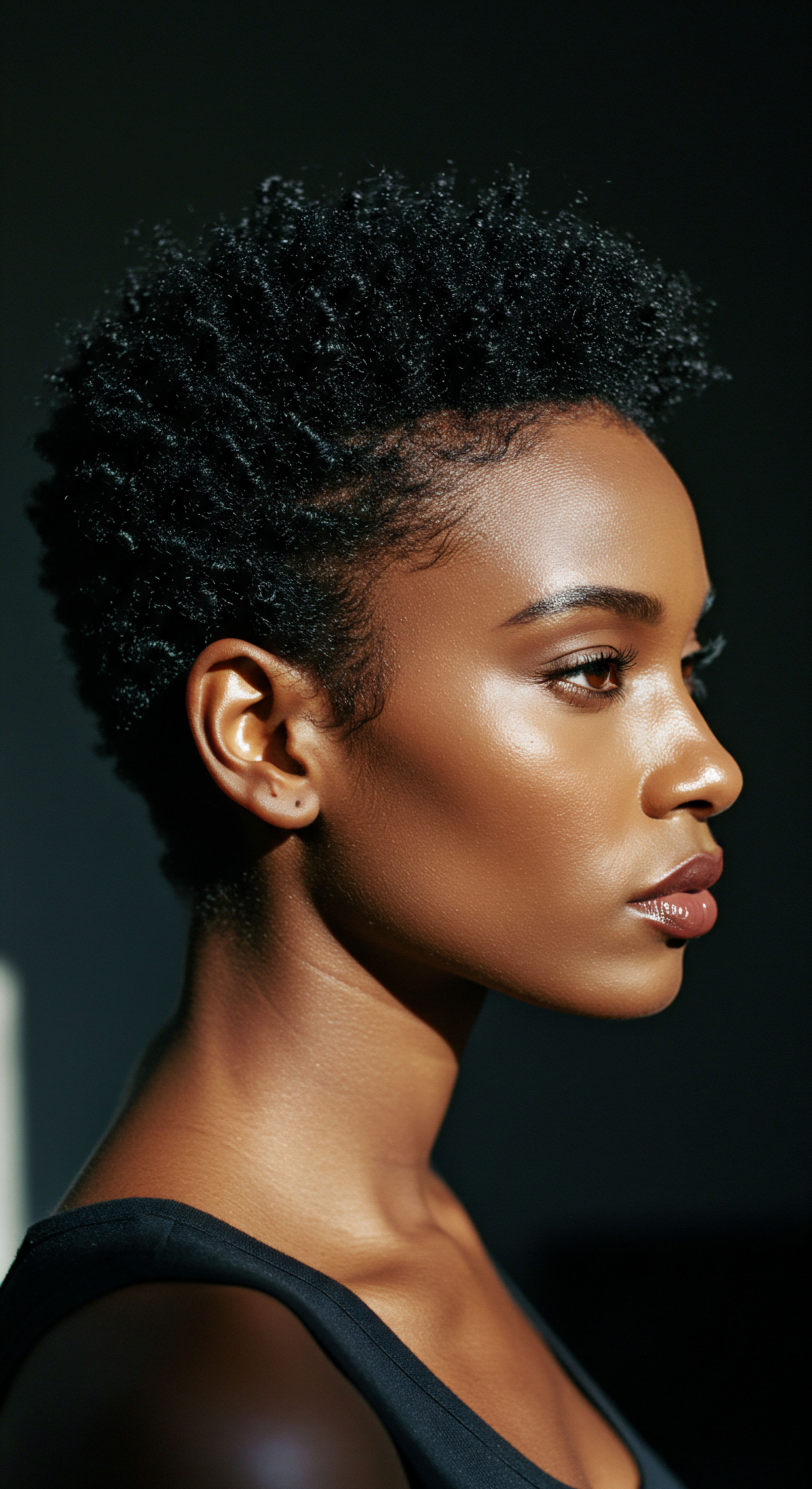
Nighttime Guardians
The hours of slumber offer a crucial opportunity for hair protection and restoration, especially against the cumulative effects of daily environmental exposure. Nighttime rituals are not mere conveniences; they are essential acts of guardianship for curl definition.
Sleeping on a Silk or Satin Pillowcase or wrapping hair in a Bonnet or scarf minimizes friction against coarser fabrics, which can disrupt the cuticle and lead to frizz. This friction, when combined with hair already compromised by pollutants, accelerates the loss of definition. Furthermore, these protective coverings create a micro-environment around the hair, helping to maintain its moisture balance regardless of the ambient air’s humidity.
They prevent the hair from drying out in low humidity and can help manage excessive moisture absorption in high humidity by acting as a gentle buffer. The wisdom of these simple, yet profound, nighttime practices ensures that the curls we meticulously define during the day are preserved, ready to greet the morning with their shape intact.

Relay
We now ascend to a more comprehensive vantage point, where the intricate dance between air quality and curl definition reveals itself not just as a matter of individual hair strands, but as a broader, interconnected phenomenon. This is where scientific rigor meets cultural understanding, where the seemingly mundane act of a curl losing its shape points to deeper environmental narratives. Here, we delve into the less obvious, perhaps even challenging, aspects of this relationship, supported by research that compels us to look beyond the surface.
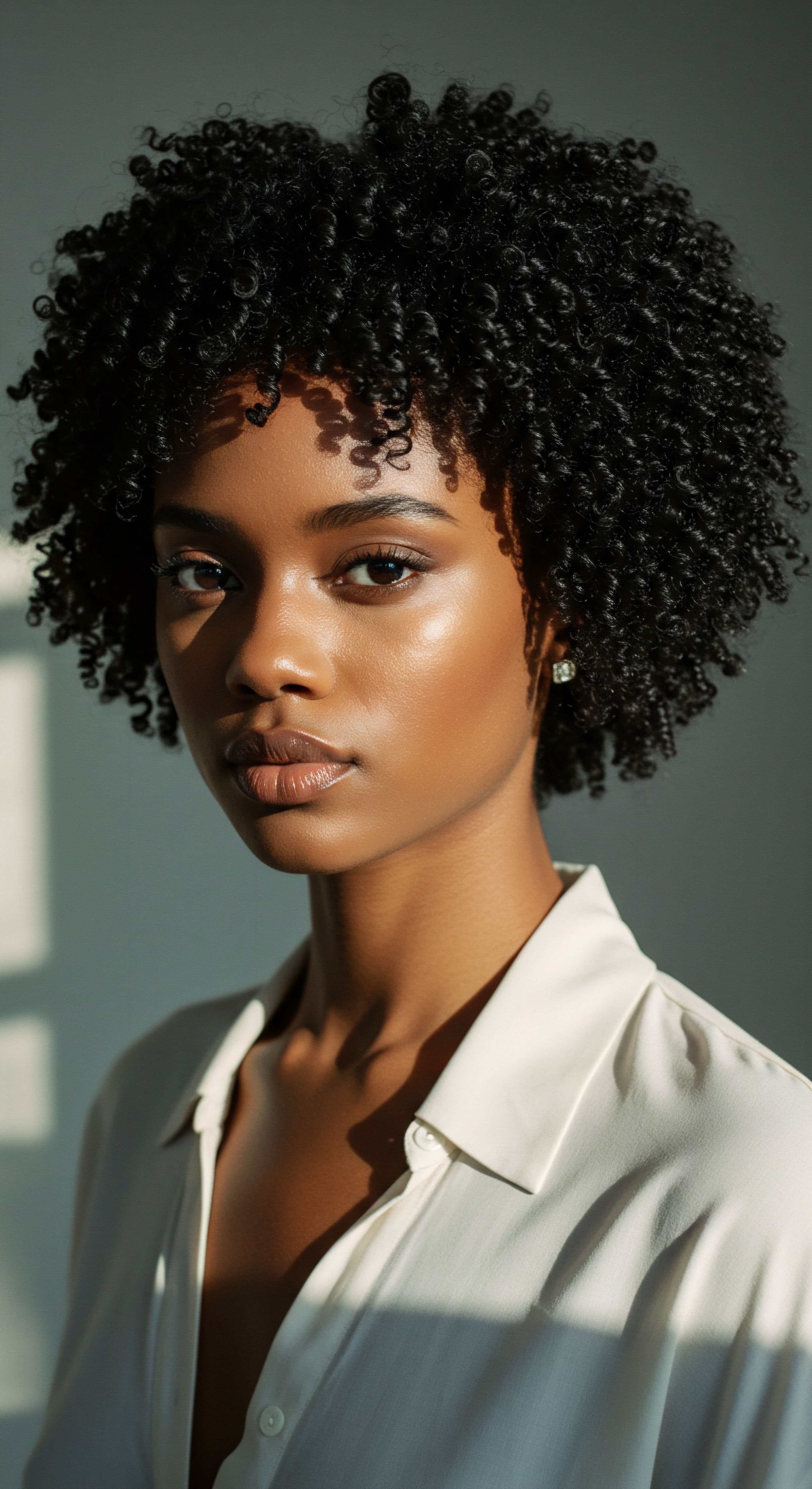
The Invisible Veil of Pollutants
Air pollution extends far beyond visible smog; it encompasses a complex cocktail of gaseous pollutants and particulate matter. These microscopic agents, often unseen, engage in a continuous assault on our hair’s structural integrity. While humidity’s effect on curls is widely recognized, the insidious impact of pollutants on the very protein architecture of hair demands closer scrutiny.
Research indicates that exposure to certain atmospheric pollutants, such as sulfur dioxide (SO2) and nitrogen dioxide (NO2), can lead to the oxidation of hair lipids and proteins. A study published in the International Journal of Cosmetic Science (2017) explored the impact of urban particulate matter on hair, demonstrating that PM2.5 exposure could lead to increased hair damage, including oxidative stress and degradation of hair proteins. This degradation directly impacts the hair’s elasticity and its ability to hold a defined curl pattern.
The study further suggested that pollutants can disrupt the scalp microbiome, leading to inflammation that, in turn, can compromise the health of the hair follicle and the quality of new growth. This subtle, continuous damage at the molecular level, far from a mere aesthetic concern, chips away at the hair’s fundamental ability to coil with clarity.
Beyond the more common pollutants, consider the often-overlooked presence of heavy metals in urban air, such as lead, cadmium, and mercury. These metals, released from industrial processes and vehicle emissions, can accumulate on the hair shaft. Their presence can catalyze oxidative reactions, further weakening the disulfide bonds within the hair cortex, which are paramount for maintaining curl structure. This environmental burden creates a scenario where the hair’s natural resilience is constantly tested, making it prone to frizz and a loss of its inherent coil, even when humidity levels appear favorable.

The Climatic Chronicle of Curls
Our understanding of climate extends beyond temperature and general humidity to include microclimates and the subtle atmospheric pressures that shape our world. These larger climatic forces, often interacting with localized pollution, cast a long shadow over the persistence of curl definition.
Consider the impact of significant temperature fluctuations. Rapid shifts from warm, humid conditions to cooler, drier air can shock the hair, causing it to rapidly lose or gain moisture in an uncontrolled manner. This erratic exchange stresses the hair shaft, making it more difficult for curls to maintain their integrity.
In areas experiencing frequent temperature inversions, where cooler air is trapped beneath a layer of warmer air, pollutants can become concentrated at ground level, creating a sustained hostile environment for hair. This phenomenon means that even within the same city, different neighborhoods might experience vastly different air quality, leading to localized variations in hair behavior.
The global climate, with its shifting patterns and localized atmospheric events, acts as a silent sculptor of textured hair’s expression.
The geological composition of certain regions can also influence air quality. Areas with high levels of naturally occurring dust, or those prone to volcanic activity, introduce unique particulate matter into the atmosphere. While less common, these specific environmental contexts highlight the diverse ways in which air quality, beyond human-made pollution, can challenge the hair’s ability to retain its defined structure.

A Global Heritage of Hair and Air
The narrative of textured hair and air quality is not solely a scientific one; it is deeply interwoven with cultural heritage and lived experience across the globe. For generations, communities have developed hair care practices attuned to their local environments, often without the explicit scientific terminology we use today. These ancestral wisdoms offer compelling insights.
In many traditional African and Afro-diasporic communities, practices like oiling, braiding, and head wrapping were not merely aesthetic choices but often served as practical responses to environmental conditions, including dusty climates, intense sun exposure, and varying humidity. The deliberate use of natural oils, for instance, created a protective barrier against environmental aggressors, while intricate braiding patterns minimized the hair’s surface area exposed to the elements. These practices, passed down through generations, demonstrate an intuitive understanding of how to maintain hair health and definition in diverse atmospheric contexts.
The migration of people from one climate to another often brings a profound shift in hair behavior. Individuals with textured hair moving from humid tropical regions to drier temperate zones frequently report increased dryness, brittleness, and a loss of curl definition. This personal experience underscores the powerful, undeniable link between atmospheric conditions and the hair’s ability to thrive.
It also highlights the adaptive nature of hair care, requiring individuals to adjust their routines to meet the demands of their new environment. The interplay of heritage, personal journey, and environmental realities paints a vibrant, complex portrait of how air quality shapes the very essence of textured hair.
| Environmental Stressor PM2.5 Exposure |
| Mechanism of Damage Oxidative stress, protein degradation, cuticle abrasion. |
| Impact on Curl Definition Increased frizz, dullness, loss of elasticity, diminished coil. |
| Environmental Stressor Heavy Metal Accumulation |
| Mechanism of Damage Catalyzes oxidative reactions, weakens disulfide bonds. |
| Impact on Curl Definition Brittle hair, reduced spring, structural compromise. |
| Environmental Stressor Rapid Temperature Shifts |
| Mechanism of Damage Uncontrolled moisture gain/loss, thermal stress. |
| Impact on Curl Definition Disrupted curl pattern, erratic expansion/contraction. |
| Environmental Stressor Understanding these complex interactions allows for more targeted care strategies for textured hair. |
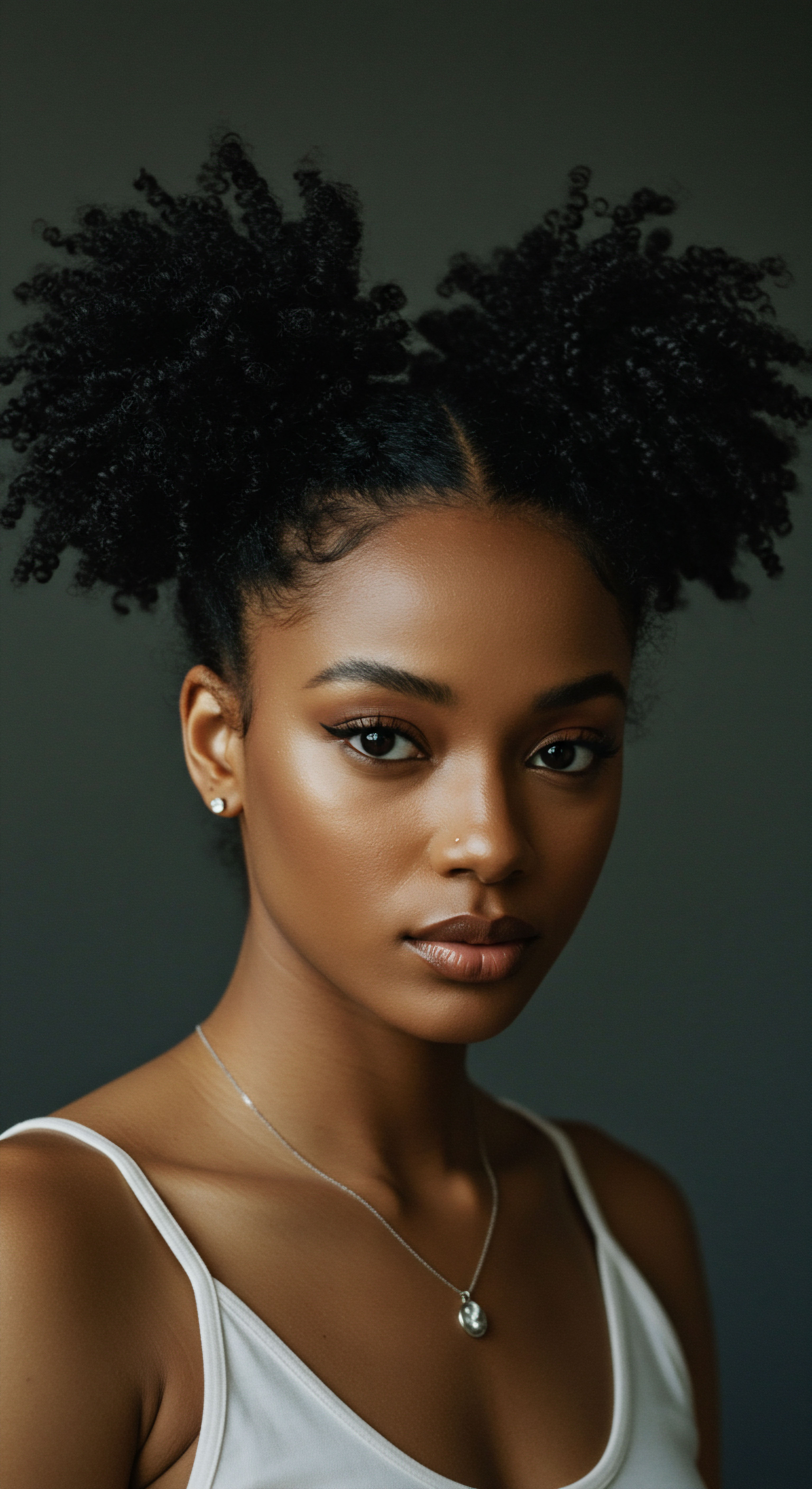
Reflection
Our exploration of air quality’s influence on curl definition unveils a relationship far more intricate than a fleeting interaction. It reveals hair not as a static entity, but as a responsive, living fiber, constantly in dialogue with its surroundings. From the microscopic dance of cuticles and cortex with airborne particles to the nuanced adjustments of daily rituals, and extending to the broader cultural narratives shaped by climate and heritage, the story of curls in the atmosphere is one of profound interconnectedness. This journey invites us to observe with greater attentiveness, to care with deeper understanding, and to celebrate the resilience and adaptability of our textured strands in a world of ever-shifting air.

References
- Ahn, H.J. Kim, J.W. Lee, S.H. Kim, M.S. Lee, W.S. (2017). Impact of urban particulate matter on human hair. International Journal of Cosmetic Science, 39(6), 619-626.
- Robbins, C.R. (2012). Chemical and Physical Behavior of Human Hair (5th ed.). Springer.
- Franbourg, A. Hallegot, P. Baltenneck, F. Freon, P. Bouillon, C. (2003). Current research on ethnic hair. Journal of the American Academy of Dermatology, 48(6), S115-S119.
- Giacomoni, P.U. & Maibach, H.I. (Eds.). (2017). The Science of Hair Care (3rd ed.). CRC Press.
- Trueb, R.M. (2016). Aging Hair. Springer.
- Dawber, R.P.R. (2008). Hair and Scalp Disorders ❉ Common Problems and Their Management (3rd ed.). Blackwell Publishing.
- Kelly, G. (2005). The Hair Care Handbook ❉ A Guide to Hair Care and Styling. Allured Publishing Corporation.